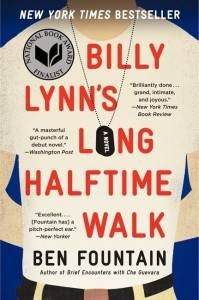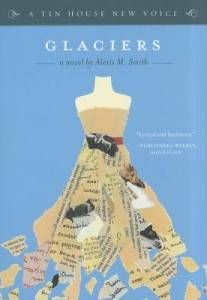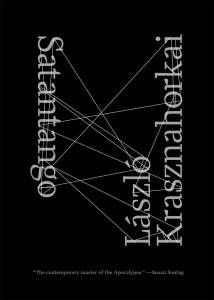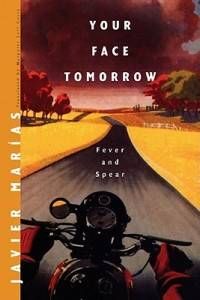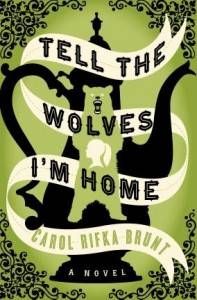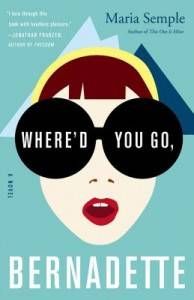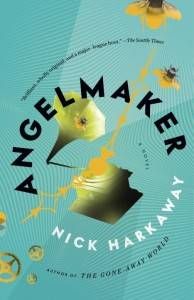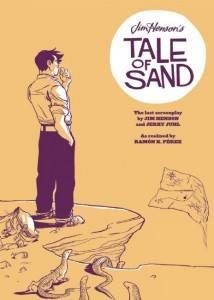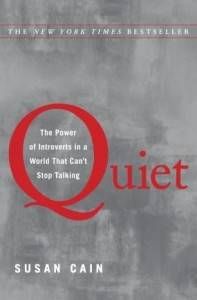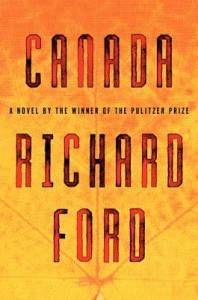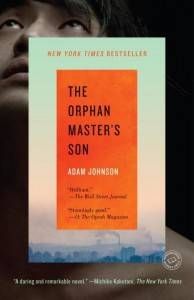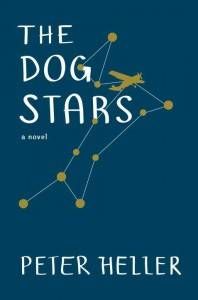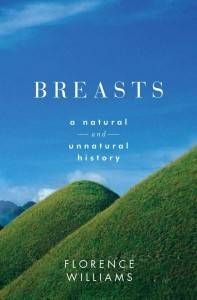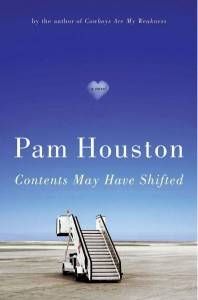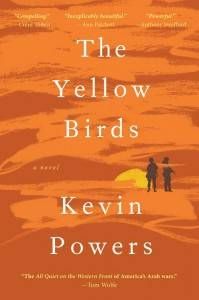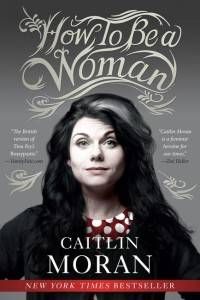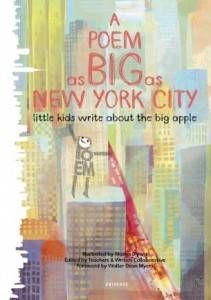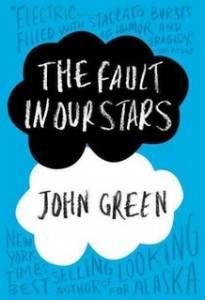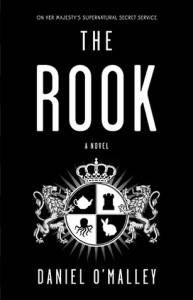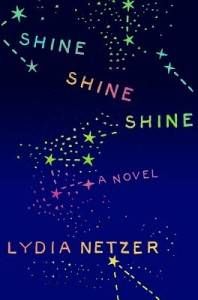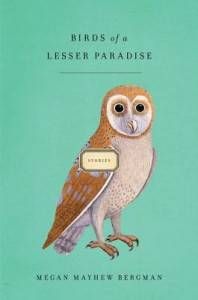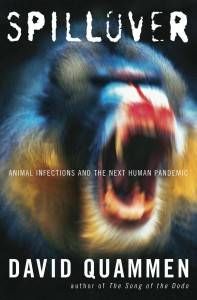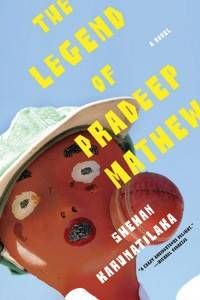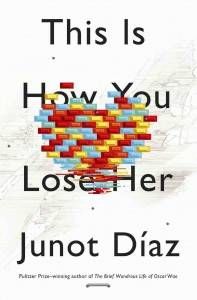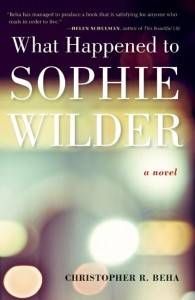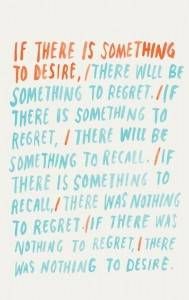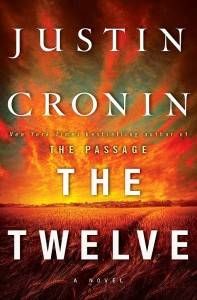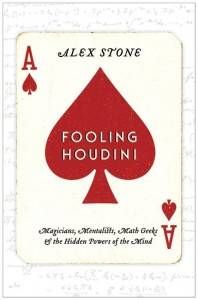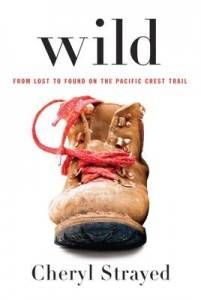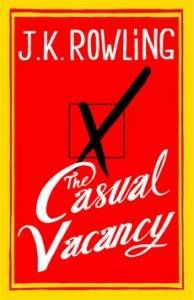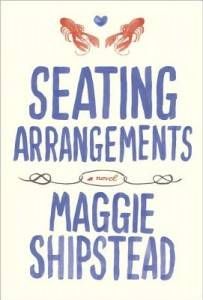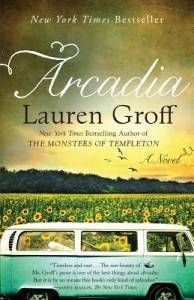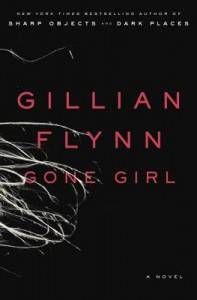David Abrams
Billy Lynn’s Long Halftime Walk by Ben Fountain: Billy Lynn’s Long Halftime Walk is like a poison-tipped knife stabbed into the belly of America. It is a scathing, effective criticism of how the nation flounders in a time of war. Well-meaning as some of the eye-bulging, neck-vein-popping post-9/11 patriotism may have been, Fountain sees it as misplaced and misguided. If you’re one of those who say “Cut me–I bleed red, white and blue” or who reverently kneel at the Altar of George Dubya or who still believe there are weapons of mass destruction somewhere out there in the Iraqi sands, then you’d best steer away from this novel. If, on the other hand, you find yourself saying (as Fountain did before he wrote the book), “What has America come to?” then step inside these pages for a closer look at our flawed, complicated country. Billy Lynn’s Long Halftime Walk follows one group of soldiers over the course of one day as they prepare to be feted at halftime during a Thanksgiving Day football game in Texas Stadium (home of “America’s team,” the Dallas Cowboys). The men of Bravo Squad, newly-famous thanks to footage of an intense firefight in Iraq broadcast by an embedded Fox News crew, will be joined at the center of the field by a pelvis-grinding Destiny’s Child, phalanxes of Dallas Cowboy cheerleaders, and a sky full of fireworks. For some Americans, the conflicts in Iraq and Afghanistan are little more than political puzzles to be snapped together with bloodless practicality. Tell that to those who, as Fountain writes, have “dealt much death and received much death and smelled it and held it and slopped through it in their boots, had it spattered on their clothes and tasted it in their mouths.” I’m a veteran of Billy Lynn’s same war and I can think of no better praise than to say, “Thank you, Ben Fountain, for writing the medicine America needs to swallow.” Glaciers by Alexis Smith: Sometimes it’s the little underdogs that really win your heart. Such was the case with Alexis Smith’s slim, swift novel which chronicles one day in the life of Isabel, a twenty-eight-year-old library worker, as she repairs damaged books, prepares for a party, and pines for a co-worker, an Iraq War veteran named “Spoke.” As a single woman living in Portland, Oregon, Isabel haunts thrift stores and collects second-hand items like postcards, teacups, aprons, dresses–the cast-off remnants which were once new, happy purchases by someone decades earlier. Just as Isabel gathers the used confetti of others’ past lives, so does Smith assemble a rich, beautiful portrait of a woman in need of someone to love in the present. It’s a gem of a book which hadn’t even been on my book-buying radar before I walked into my local Barnes & Noble. I was on my way to grab a coffee from the cafe, completely minding my own business when this book came into my peripheral vision. It was like one of those “meet cute” scenes in movies when the pretty brunette dogwalker and the distracted guy with the briefcase, walking in opposite directions, round a corner at the same time and he ends up tangled in leashes and tails and she knocks the briefcase out of his hand, spilling papers all over the sidewalk. That’s how it was for me with Glaciers. A chance encounter. A walking past, then a double-take and a doubling-back. A glance at the cover. A skim of the plot summary, blurbs, and first sentence (“Isabel often thinks of Amsterdam, though she has never been there, and probably will never go.”). An eye-poke of interest. An impulse buy. I’m here to tell you that it was the best thing I bought all year (and that includes the 2011 GMC Acadia my wife and I just purchased).
Scott Beauchamp
Satantango by Laszlo Krasznahorkai: Sometimes you want to read a book because you need a glorious distraction. Sometimes you read a book because you need inspiration. But the best books, in my opinion, are the ones that justify their own usefulness by delivering to us a kind of hard-won wisdom that we can’t get anywhere else. There is no other book out there that’s like this one. It’s not easy to read, it’s strange, clouded in dense and poetic language, and it often disturbs the reader on a spiritual level. But when you’ve finished reading it, you’ve become emboldened to exist in a way that’s closer to the highest ideals of your character. After reading this book, you become more yourself. I could go on and describe the plot to you: the last days on a communal farm under a torrent of endless rain, the cynical and exhausted peasants both vulnerable and ruthless at the same time, the con-artists and henchmen…but this is a meal best tasted to be believed. Dig in. Your Face Tomorrow by Javier Marias: This is an entire series, fairly long and wordy, but expertly conceived and flawlessly delivered. In the series, Jamie Deza, a bilingual Spaniard recently separated from his wife, finds himself employed in the world of espionage. He’s not quite sure who he’s working for, or even who he’s working against, but his skill as a reader of subtle signs and human motivations is a perfect metaphor for the writer himself, often both intimate with as well as estranged from the audience he’s working for. The plot is Ian Fleming, but the prose, with its emphasis on interiority, is Henry James. Just imagine if James Bond were a language professor who didn’t know how to shoot a gun.
Jodi Chromey
Tell the Wolves I’m Home by Carol Rifka Brunt: I love this story of fourteen-year-old June Elbus dealing with the death of her Uncle Finn from AIDS. I love it because it is tender and heartfelt. I love it because it depicts 1987 like it really was and not in the candy-coated, side-ponied MTV video version that nostalgia has created. And I loved it most of all because at one point it made me cry so hard I had to stop and collect myself before I continued. Where’d You Go, Bernadette? by Maria Semple: This one is beating out The Age of Miracles by a nose mostly because it’s funny, and my other pick was a tear-jerker. This epistolary tale about quirky, snobby architect Bernadette Fox and her disappearance is the kind of social satire that makes you wince when you see yourself in it and makes you laugh right out loud when that same snark is aimed at the kind of people who annoy the crap out of you. Best of all, Bernadette is the kind of bitchy, fun, creative character who’s just plain fun to spend your time with.
Ali Colluccio
Angelmaker by Nick Harkaway: Three months after finishing Angelmaker, I’m still carrying it around with me. Nick Harkaway created a world so rich and complete that I still find myself haunted by its ghosts. I see elements of the book everywhere I go: X-Men comics, the new James Bond movie, my freshly painted red toenails. Harkaway has this wonderful talent of juggling an insane amount of fantastical elements. On paper you think, “there is no way he can do all that and still have it work.” But he pulls it off beautifully. Angelmaker has swashbuckling and spies, bees and automata, gangsters and supervillains, and Women of Consequence. It’s high adventure in the depths of London’s underground Underground, and an absolute joy to read. Tale of Sand by Ramon Perez based on the screenplay by Jim Henson and Jerry Juhl: The story of A Tale of Sand is a fantastic one if you’re a Jim Henson fan (and really, who isn’t). Written in the mid-1960s as an experimental screenplay by Henson and his soon-to-be creative partner on Sesame Street Jerry Juhl, A Tale of Sand was shopped around for a while before being put on the shelf so that Henson could focus on a little thing called The Muppets. More than 40 years later, comics publisher Archaia Entertainment worked with the Henson estate to bring the story to life. Artist Ramon Perez worked exclusively off the original screenplay to create the graphic novelization of A Tale of Sand, as opposed to drawing from an adapted comics script. This book is the closest the world will come to seeing a comic by Jim Henson. And it is absolutely breathtaking. The scruffy Mac is our Alice as he races through the looking glass of Southwestern deserts. The story is very much about the journey, not the destination. Perez’s artwork absolutely sings. It draws you in so completely that you can hear each and every sound effect if you listen (and there’s a lot of sound in this book). The colors are vibrant and over-saturated, creating a perfect Wonderland for the story. There are gorgeous double-page spreads with art that flows so naturally there’s no need for traditional panels or grids. A Tale of Sand is an exquisite showcase of what can only be done in comics. It’s a marvel to behold.
Peter Damien
Quiet by Susan Cain – This was the only book I read in 2012 which was actually published IN 2012. Happily, it was also a brilliant one. A very compelling nonfiction work studying introversion and the value of the quiet, thoughtful person and how they fit into and are of use in a society which is traditionally enamored with the big loud extrovert. I spent most of the book being hyper and excited, and I kept thinking “it’s me! It’s about me!” which is a wonderful thing to come across in a book. Quiet occasionally skews a lot toward the corporate world, about which I have so little interest, it can only be measured on the quantum level…but it doesn’t stay there, and it is a compelling and fascinating read all the way through. I finished it feeling a lot less guilty for being an awkward and socially-defunct sort of hairy recluse. (That should be a blurb on the dust jacket.)
Brenna Gray
Canada by Richard Ford: Because I like it when America remembers Canada exists. Because I love the rambling sumptuous clipped dude-prose. Because of the prairies. Because it opens with the best line in literature all year (and I will fight in a cage over that statement). Because I got to write “penis-waving literature” on the internet and you got to read it. Because it’s exquisite. Because Richard Ford is a treasure. Because.
Liberty Hardy
The Orphan Master’s Son by Adam Johnson: This book was published back at the beginning of the year, but it has stuck with me through 2012 as one of the best. It is a beautiful, funny, zany, utterly original novel about North Korea. Yes, I said zany and North Korea together. It’s about Pak Jun Do, an orphan from the Long Tomorrows orphanage, and his years of training and service in his country’s military. Jun Do gets mixed up in kidnapping, he goes on a wacky field trip to Texas, and eventually ends up in a labor camp. That’s just the first part of the book. The second part is about the lovely actress Sun Moon and her evil husband, Commander Ga, who has now been replaced by an impostor. But the new Ga loves her, and is working to get Sun Moon and her children out of the country and away from Kim Jong-il, who seeks her affection. It’s a thrilling love story, mixed with real situations facing North Koreans today. Absolutely incredible. The Dog Stars by Peter Heller If I wrote a book about being one of the last people alive, it wouldn’t be very exciting, because the main character would sit and read books all day. Because that’s how I would spend my days. Fortunately, there’s a lot more to The Dog Stars. It’s about a guy named Hig, who lives alone in Colorado with his dog, after a superflu wipes out most of the population, including his wife. Hig spends his days growing food, securing his property, and flying his Cesna, checking for intruders creeping up on him and his neighbor, a gun-loving misanthrope. But when Hig hears a call on his plane’s radio, he decides (after three years) to go investigate. This book is very much like The Road, in that it is extremely grim in parts (one guy wears the world’s most upsetting jewelry), but it sets itself apart from The Road by being extremely uplifting and hopeful at the prospect of recovery for the human race. And it’s written in these fabulous little bursts. I loved this book so much. Oh, and some advice: get your tissues ready before you start it.
Rebecca Joines Schinsky
Breasts: A Natural and Unnatural History by Florence Williams: Confirming what we’ve long suspected–that everything under the sun is connected to boobs–Florence Williams presents a comprehensive look at the breast in American and world culture. There’s a lot of science between these pages, and history, philosophy, psychology, and humor. Williams examines why human breasts look the way they look, why and how they do what they do, how we think about them, and what they mean to us. She presents the environment’s impact on breasts, and breasts’ impact on the environment. She shares stories about her own breasts, and charming, fascinating, fact-filled stories about other women’s (and some men’s) breasts. She gives us the breast as sexual object, the breast as source of life-giving nourishment, and the breast under attack from illness. And she does it all with incredible humor and warmth, and a narrative voice that makes reading the book feel like having a long lunch with a really smart friend. If you have breasts or love someone who does (which, come on, is basically all of us), you’re sure to learn something from Breasts, and you’ll have a blast doing it. This is narrative nonfiction of the highest order. Contents May Have Shifted by Pam Houston: I read a lot of great fiction this year, and a lot of whoa-how-did-she-pull-that-off fiction. I read some fiction that held up a mirror to my life and asked me to look at myself in a new way, and some fiction that took my breath away with its heart and emotional nakedness. I even read some really fun fiction. But I only read one work of fiction that was all those things, and it was Pam Houston’s globetrotting novel-slash-memoir-slash-sorta-kinda-connected-short-stories Contents May Have Shifted. It was one of my first reads of 2012, and it’s the only one I’ve gone back to over and over. It’s about love and friendship (Houston nails the magic of friendship between women like no one else) and travel, and how sometimes we leave home looking for things we already have. And it’s the closest thing to perfect I’ve read in a really long time. Houston is…well…you just have to read her and find out for yourself. I’m still struggling for words. It’s that good.
Rachel Manwill
The Yellow Birds by Kevin Powers: I am not by and large a fan of “war novels;” I don’t particularly seek them out, and there have to be some complex characters and moving plot elements for me to grab ahold of a war book. But considering that one of my all-time favorite books is All Quiet on The Western Front, suffice it to say, when I do like a war novel, I don’t just like it; I love it with my whole being. Powers’ novel is one of the slimmest but also one of the most powerful books I’ve read in a long time. The story of a friendship as much as of a war, it’s told by Private Bartle, who alternates between his present and his memories of the Iraq War. His perspective is striking, and I finished this whisper-quiet novel having been completely knocked on my ass by the revelations that come. How to Be a Woman by Caitlin Moran: Though Caitlin Moran’s collection of essays/memoir is ostensibly about Feminism with a Capital F (and as such has gotten flack for some decidedly non-hardline feminism arguments), I still rank it as one of the best books of my year, purely for the reason that it made me laugh my ass off. If you read this book expecting it to be an academic text on feminism, you will likely be irritated. But Moran is a TV critic and columnist – not an academic scholar – so her take on feminism is just like mine: “Put your hand in your pants. A) do you have a vagina? and B) do you want to be in charge of it? If you said ‘yes’ to both, then congratulations! You’re a feminist.” There were so many relatable moments within these essays in which Moran expressed feelings about womanhood I’d held for a long time but hadn’t had the ability or gumption to articulate myself. I found that this was less of a manifesto and more of an expression of her experiences, some of which I’d also experienced in one way or another. And the ability to cackle with recognition and think, “OMG ME TOO!” is the reason it tops my Best of ‘12 list.
Loyal Miles
A Poem as Big as New York City, edited by Teachers & Writers Collaborative, with a foreword by Walter Dean Myers: The subtitle for my favorite children’s book of 2012 is “Little Kids Write about the Big Apple.” I admit I had some insider involvement in this book, which features poetry written by hundreds of children from neighborhoods across New York City. The book’s adapter, Melanie Maria Goodreaux, collaged the children’s poems into a poetic journey exploring the sights and sounds of New York, from slithering subways to snowy rooftops in Queens, to Prospect Park dreams and seagulls over the harbor, to the banks of the Hudson and the streets of the Bronx. After a difficult last month for the city, this book’s melding of children’s voices and the playful, sprightly illustrations of Masha D’yans are a reminder of the everyday wonder, the crazy magic of New York City.
Cassandra Neace
The Fault in Our Stars by John Green: I sometimes don’t do so well with books that are surrounded by attention before they even hit the shelves. I probably wouldn’t have given this one a shot, but I had started watching Green’s YouTube videos, and he won me over as a person. I went to his appearance here in Houston, and I stood in line with hundreds of other people to get my book signed. And then I promptly read every single word in one sitting. This is an amazing book about two teenagers who have to grow up too fast because they both have cancer. It could have been a terribly sad book, and it does have its moments, but it is also smart and funny and hopeful. It’s the undeniable hope that runs through the whole story that makes this book stand out. You’ll laugh. You’ll cry. You’ll buy more John Green books. I did. The Rook by Daniel O’Malley: This was one of the books that I discovered from Audiobook Week, when I came across a blogger review that called it “an adult fantasy that reminds us of those feelings we would get as a child hiding under our blankets trying to read just one more chapter.” He wasn’t exaggerating. O’Malley’s story is highly inventive. He has a way of making the most outrageous elements all make sense, and he never drops a single plot line. Everything is all neat and tidy at the end. Myfwany Thomas – both versions of her – is a highly engaging narrator. She is highly capable, extremely efficient, and, before it’s all over, both likable and confident. The book is amazing on its own, but the audio is phenomenal. It’s definitely one of my must-listens for the year.
Amanda Nelson
Shine Shine Shine by Lydia Netzer: Sunny is a wealthy suburban housewife and mother, married to an eccentric genius-astronaut-robot-builder-guy. She’s pregnant with her second child when her husband goes to space, and when she gets into a minor car accident that totally upends her life and shows all the weirdness that lives under the surface of her seemingly perfect life. This is the strangest, most original, quirkiest book I read this year. There’s love, domestic drama, science fiction, murder, exotic locations (including, but not limited to, space)–basically everything you could want in a novel. Birds of a Lesser Paradise by Megan Mayhew Bergman: This lovely short story collection explores the wildness of nature and the wildness of our relationships–especially our relationships with family. This lady can write some characters, man. They’re all deeply flawed, deeply lovable, totally engrossing–you know, sort of like real people. From a daughter trying to deal with her mother’s death by hunting down her mom’s parrot, to a population control political activist wrestling with what to do about her pregnancy, all these stories reach into the heart of what it is to be human- the most social and mysterious of animals.
Jenn Northington
Spillover by David Quammen: I don’t read a lot of nonfiction, so when I fall for one I fall hard. I’ve been a fan of Quammen’s essays for years, and I can’t shut up about his new book. It’s a weird one to recommend (“It’s about diseases that get transferred from animals to humans! And is really fascinating! Why are looking at me like that?”) but I promise you that you will not only know more and feel smarter when you’re done with it, you will be in awe of his making-diseases-interesting abilities. The Legend of Pradeep Mathew by Shehan Karunatilaka: This is another weird one, because it’s about a Sri Lankan cricketer narrated by an aging, alcoholic sports-writer, but also it’s a book inside a book (inside a book?), a whodunit, an ode to the power of organized sports, a meditation on fathers and sons, and a war story, and also it’s really funny. All at the same time. Ambitious and totally enthralling, if you give it half a chance.
Jennifer Paull
This Is How You Lose Her by Junot Diaz: All for the phrase from the title story: “Sometimes a start is all you get.” That has stayed with me for months, sometimes sounding pessimistic, sometimes bracing and bootstrapping, sometimes coolly observant. It became my harsh cheerleader this fall.
Nicole Perrin
What Happened to Sophie Wilder by Christopher Beha: I don’t read a massive amount of contemporary fiction most years, but I have a few critics I really trust, and when one of them writes that a book “should especially be read by those who have given up on contemporary literature,” because “it will renew their faith in what literature is capable of achieving,” I take note. That was D.G. Myers’s take on What Happened to Sophie Wilder, and I dropped everything I was doing to see what the fuss was about—and I’ve hardly stopped talking about it since. I wrote about it on my own blog, here at Book Riot, and all over the Twitters. And I’m not done yet, so I hope people aren’t tired of it. Fortunately, I know a lot of people still haven’t heard of the book, so I can continue preaching (something Sophie Wilder, by the way, never does, despite taking religion and the salvation of the human soul as one of its main concerns). It’s a book about writing, about college, about love, about God, about faith, about Roman Catholicism, about orphans, death, even nuns. It’s about leaving irony behind and living sincerely, no matter how scary that might be. And it’s a novel deeply about ambiguity—you will not finish it with an answer to the title question. Or will you? I did, but I know it’s a tentative one.
Kit Steinkellner
Wonder by R.J. Palacio: If you had told me in January that one of my favorite books of the year was going to be a middle-grade book, I would have said “No, because I’m not twelve anymore.” And here I am, with one of my favorite books being Wonder, the story of a boy with a severe cranio-facial anomaly and his first year in fifth grade. Equal parts side-splitting and devastating, this is one of my favorite coming-of-age stories ever. If There Is Something to Desire by Vera Pavlova: The slimmest book of poetry by a Russian poet whose poems are the size of paragraphs and tweets, this volume of poetry about love and sex and commitment and aging made me fall in love with poetry again. I want some of these poems read at my wedding, and I’m CRAZY picky about what literature is going to be read during the ceremony.
Johann Thorsson
The Twelve by Justin Cronin: The sequel to a book that was a surprise hit (as far as I’m concerned ), The Twelve continues the story of the survivors of the vampire apocalypse as they try to remake the world. It is exciting and horrifying and a lot of gruesome fun. I like my fantasy and sci-fi with a hefty dollop of good writing, and Justin Cronin delivers. Intermingled wit the stories of the survivors are flashbacks to the time when the madness starts and the introduction of new characters. It is an excellent blend of horror and science fiction, and a great way to spend a few evenings.
Kim Ukura
Fooling Houdini by Alex Stone: Fooling Houdini was, hands down, the most delightful, nerdy and fun book I read this year. Ever since he was a kid, Alex Stone loved magic. As a physics graduate student at Columbia University in New York City, he discovered the world of real-life magicians, complete with back-room secret societies, three-card monte games on the streets, and research in cutting-edge psychology labs. Stone’s journey to magical superiority begins with an embarssing showing at the Magic Olympics and ends with the story of how he developed a signature card trick that combines his love of physics with the study of magic. This entire book is a completly engaging look into a subculture built on secrets that combines elements of science, psychology, neuroscience and history into a wonderfully geeky narrative that should appeal to fiction and nonfiction lovers alike. Wild by Cheryl Strayed: When she was in her mid-twenties, Cheryl Strayed made the remarkably foolhardy decision to hike the Pacific Crest Trail from the Mojave Desert through Washington state alone, without any training or previous distance hiking experience. In the wake of her mother’s death and her failed marriage, Strayed viewed the trail as a place to piece back together her life and find herself once again. There has been a ton of praise for Wild this year, and I, for one, agree with nearly all of it. While some readers I admire have criticized the book for feeling whiny or self-indulgent or criticized Strayed for her nearly fatal lack of thought going into her hike, I simply couldn’t be bothered to mind those things during the single sitting it took me to read this book. I loved the voice and maturity that Strayed brought to looking back on her life, and the way she was able to take her single extreme experience and make it feel somehow universal and understandable. I was absorbed from beginning to end, and am looking forward to revisiting this one in the years to com.
Wallace Yovetich
I do not typically read the latest and greatest books, I like to wait until hype dies down and the book has proven merit before diving in. Therefore, my ability to contribute to a best-of-the-year is tricky. I did, however, get drawn into the three [ed: sneaky!] following books for various reasons… How It All Began by Penelope Lively and The Casual Vacancy by J.K. Rowling: I really enjoyed both of these for their slow plots, character building, and realistic day-to-day portrayals. These are two books that I could relax and slow down with – soaking them in instead of devouring them up. Seating Arrangements by Maggie Shipstead: Give me a WASPy island off the New England coast with a cast of eccentric and flawed characters any day. Again, this pick doesn’t have an edge-of-your-seat plot, but I found the imperfections of the characters charming and delightful; a good recipe for a perfect summer read.
Greg Zimmerman
Arcadia by Lauren Groff: This novel – though I read it six months ago – has stuck with me as if I finished it five minutes ago. Isn’t that the mark of a great read? With beautiful, evocative prose told in short, paragraph to no-more-than-a-page-or-two snippets, Groff constructs this gorgeous story of a hippie commune in upstate New York. Bit is six years old at the start, but we follow him through the rest of his life — even into the future. I’ve never not wanted a book to end more than this one – not just one of my favorites of 2012, it’s one my favorite novels in a long, long time. Gone Girl by Gillian Flynn: Duh, right? This twisty-turny novel of marital betrayal will no doubt find its way onto many ‘a end-’o-year bests list. I haven’t met a single person who hasn’t just been blown away by the ingenuity of the plot here. The reader is on as much of a roller coaster as the characters, here – we learn new bits of information at the same time they do, and so are as surprised as they are. But beyond the plot, this is just one of the outright coolest books you’ll read — Flynn’s riffs on everything from the mythical “Cool Girl” to the hilarious “Dancing Monkeys” are just an added bonus to an otherwise already fantastic novel.
